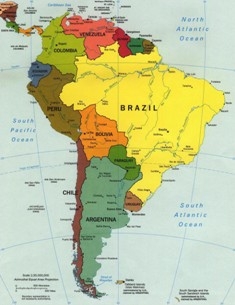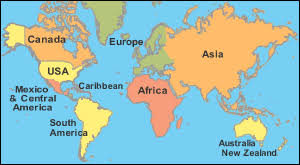South American travel market continues to boom : ITB

Pisa/Berlin – Growth in the South American travel market continues to outstrip that of its larger North American counterpart. This is one of the findings of the annual ITB World Travel Trends Report, conducted by IPK International and commissioned by the world’s leading travel trade show, which noted an unabated lust for international travel, particularly in Brazil.
Growth in the North American travel market may not have matched that of its South American neighbours, but North Americans still enjoy travelling. Following a lean period in recent years international departures from Canada this year grew by six per cent. The US market for international travel rose by only one per cent, which helped the North American market to achieve a year-on-year growth figure of three per cent.
North Americans went on longer trips and averaged 6.9 overnights at their destinations. Furthermore, overnights increased by five per cent. Stays of more than four overnights rose by nine per cent, while short breaks were less popular and fell by the same figure. Spending at travel destinations increased by around three per cent.
Rising by three per cent, holiday trips contributed most to the growth in international travel. The most popular types of travel were beach holidays and city breaks, which grew by six and five per cent respectively. Cruises, usually very popular among North Americans, fell by three per cent. At around two per cent, the business travel market grew moderately.
Overall, the forecasts for 2014 are positive. Around 27 per cent of North Americans intended to travel more frequently and 39 per cent aimed to travel just as often. Around 22 per cent said they wanted to travel less. Overall, international trips are forecast to increase by around three per cent.
South America continues to display stable growth in the market for international travel, where it has easily overtaken the countries of North America. South America continues to be a dynamic driving force of the global tourism industry. Brazilians, who are extremely keen on shopping tours, have contributed significantly towards this trend.
Over the first eight months of 2013, the number of international trips taken by South Americans increased by 6 per cent, IPK’s American Travel Monitor survey found. Growing by ten per cent, the individual markets of the Americas in particular benefited from a general lust for travel. Overseas travel rose by two per cent. There was a marked boom in trips averaging less than four overnights. This segment grew by 16 per cent. Trips which took longer increased by only one per cent. Overall, South Americans spent two per cent more overnights abroad than in 2012.
As in the US and Canadian travel markets holiday trips were the driving force, rising by an impressive nine per cent. In addition to beach holidays and city breaks round trips were in great demand. They increased by 13 per cent, illustrating the difference between trends in South America on the one hand and the USA and Canada on the other, where this travel segment has become less popular.
Spending by travellers at their destinations remained high, reaching 12 per cent more on trips abroad than in 2012. Brazilians frequently went on shopping tours but according to a survey, since 2008 and 2009 increasing numbers of holidaymakers have tried out other types of travel as well. For Brazilians North America continues to be in demand for shopping trips, whereas on their travels to Europe this segment would seem to be of less importance.
Once again, the forecasts for 2014 for South America’s outbound travel market are very positive. A full 43 per cent of those polled wanted to go on more trips abroad in 2014 than in 2013. Around 34 per cent had the same intentions as in 2013 and only 19 per cent aimed to travel less. Overall, in 2014 the South American travel market is expected to grow by six per cent.
Compared to the outbound travel market this year’s figures for inbound travel to the Americas were moderate. UNWTO reported an increase of 3.2 per cent. Next year’s FIFA World Cup in Brasil will play an important role. Around 600,000 international visitors are expected to attend this major sporting event. The majority will come from other South American countries as well as from North America and Europe.
All the findings are based on information from papers held at the World Travel Monitor® Forum in Pisa, which is sponsored by ITB Berlin. Every year the consultancy IPK International invites more than 50 tourism experts and scientists from around the world to present the latest statistics and trends in international tourism.- itb-berlin.com














